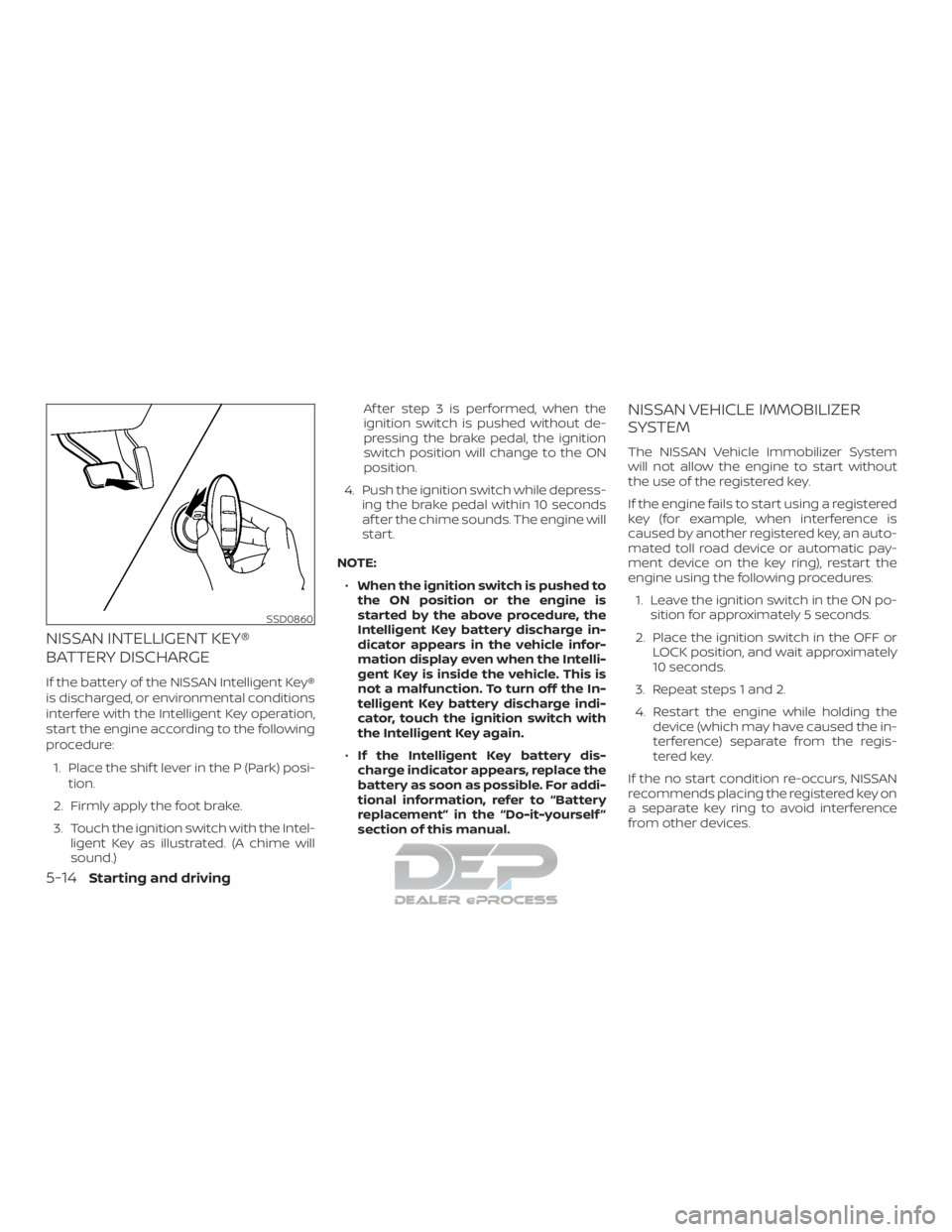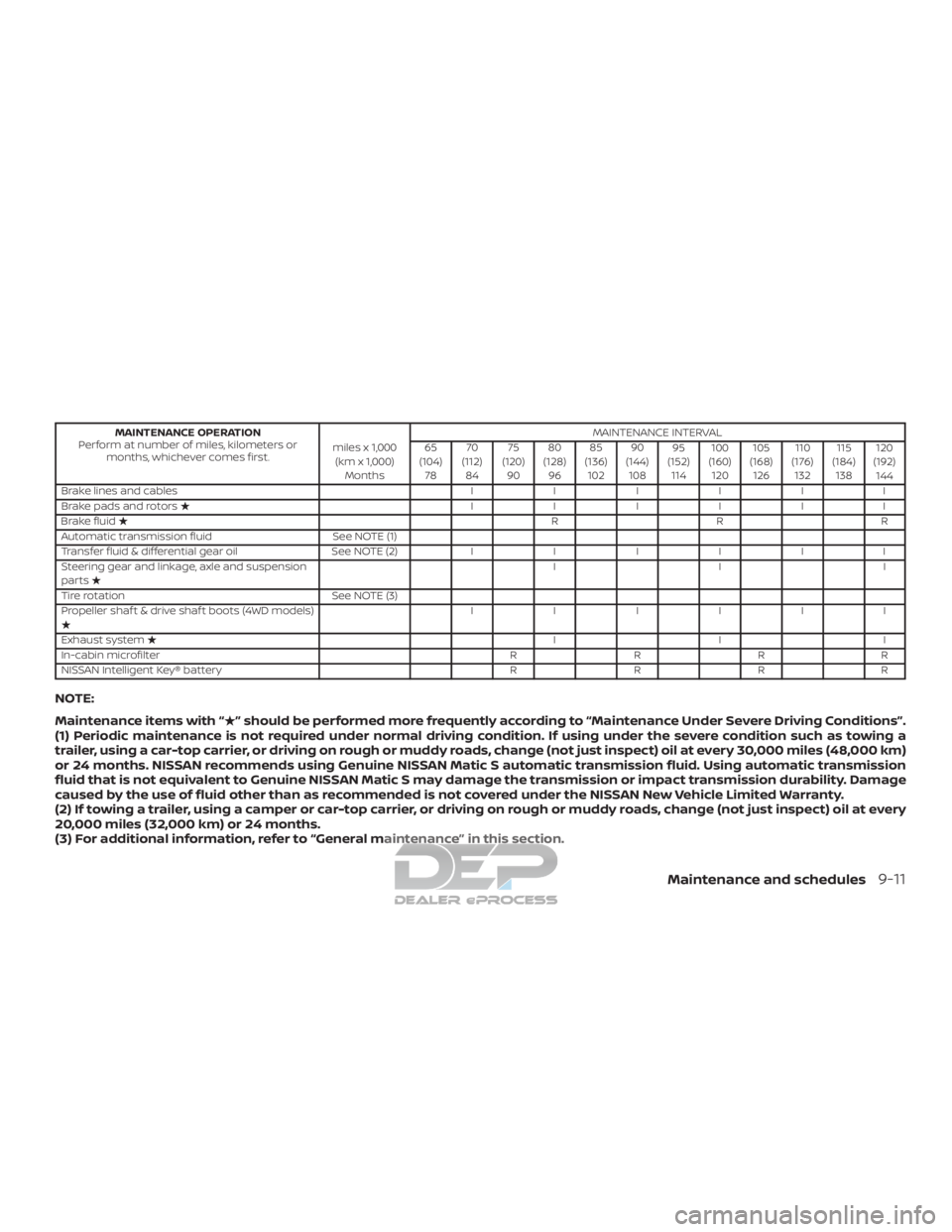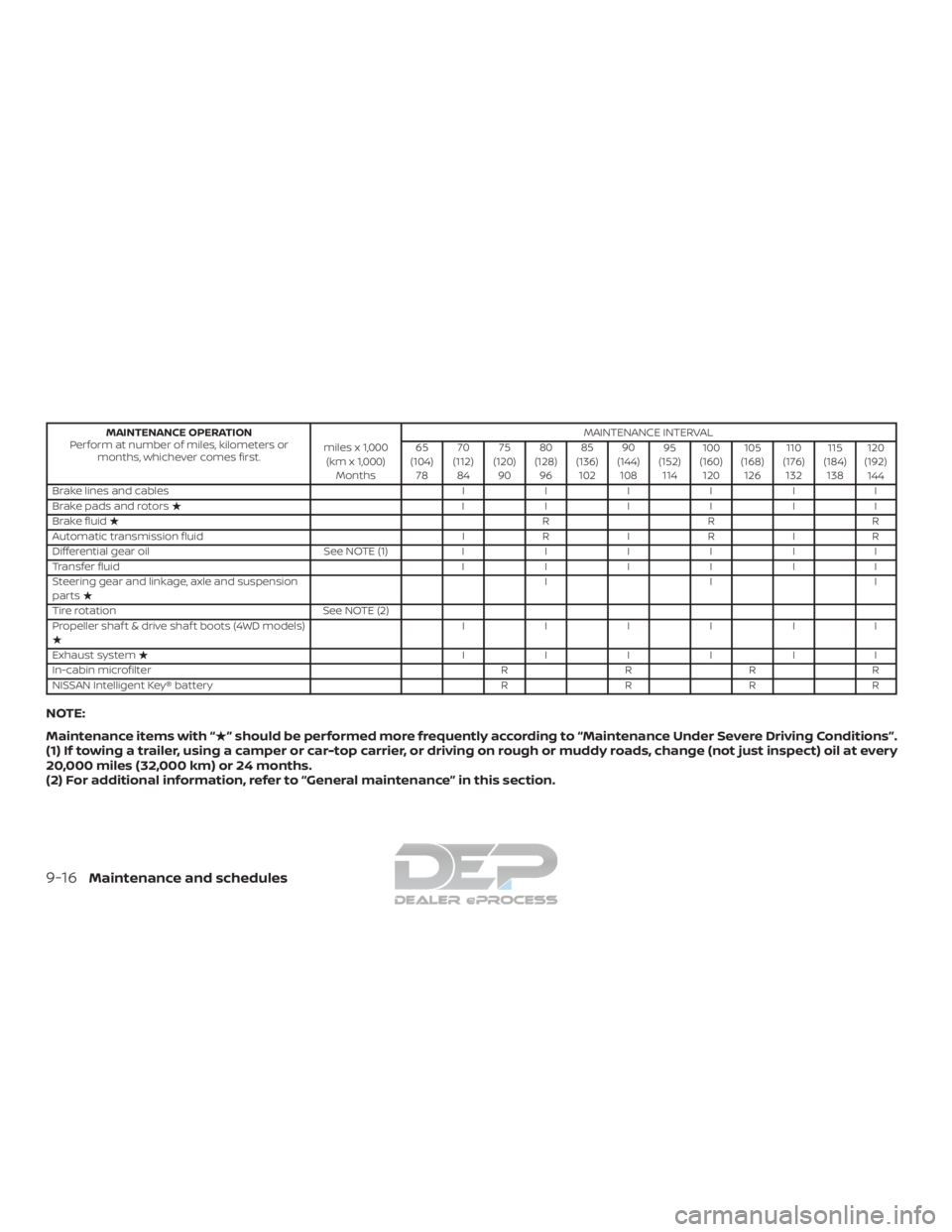Page 367 of 682

NISSAN INTELLIGENT KEY®
BATTERY DISCHARGE
If the battery of the NISSAN Intelligent Key®
is discharged, or environmental conditions
interfere with the Intelligent Key operation,
start the engine according to the following
procedure:1. Place the shif t lever in the P (Park) posi- tion.
2. Firmly apply the foot brake.
3. Touch the ignition switch with the Intel- ligent Key as illustrated. (A chime will
sound.) Af ter step 3 is performed, when the
ignition switch is pushed without de-
pressing the brake pedal, the ignition
switch position will change to the ON
position.
4. Push the ignition switch while depress- ing the brake pedal within 10 seconds
af ter the chime sounds. The engine will
start.
NOTE: ∙ When the ignition switch is pushed to
the ON position or the engine is
started by the above procedure, the
Intelligent Key battery discharge in-
dicator appears in the vehicle infor-
mation display even when the Intelli-
gent Key is inside the vehicle. This is
not a malfunction. To turn off the In-
telligent Key battery discharge indi-
cator, touch the ignition switch with
the Intelligent Key again.
∙ If the Intelligent Key battery dis-
charge indicator appears, replace the
battery as soon as possible. For addi-
tional information, refer to “Battery
replacement” in the “Do-it-yourself ”
section of this manual.
NISSAN VEHICLE IMMOBILIZER
SYSTEM
The NISSAN Vehicle Immobilizer System
will not allow the engine to start without
the use of the registered key.
If the engine fails to start using a registered
key (for example, when interference is
caused by another registered key, an auto-
mated toll road device or automatic pay-
ment device on the key ring), restart the
engine using the following procedures:
1. Leave the ignition switch in the ON po- sition for approximately 5 seconds.
2. Place the ignition switch in the OFF or LOCK position, and wait approximately
10 seconds.
3. Repeat steps 1 and 2.
4. Restart the engine while holding the device (which may have caused the in-
terference) separate from the regis-
tered key.
If the no start condition re-occurs, NISSAN
recommends placing the registered key on
a separate key ring to avoid interference
from other devices.
SSD0860
5-14Starting and driving
Page 512 of 682

MAINTENANCE OPERATION
Perform at number of miles, kilometers or months, whichever comes first. miles x 1,000
(km x 1,000) Months MAINTENANCE INTERVAL
65
(104) 78 70
(112) 84 75
(120) 90 80
(128) 96 85
(136) 102 90
(144) 108 95
(152) 114 100
(160) 120 105
(168) 126 110
(176) 132 115
(184) 138 120
(192) 144
B ra ke li n es an d ca b le s IIIIII
Brake pads and rotors � IIIIII
Brake fluid � RRR
Automatic transmission fluid See NOTE (1)
Transfer fluid & differential gear oil See NOTE (2)IIIIII
Steering gear and linkage, axle and suspension
parts � III
Tire rotation See NOTE (3)
Propeller shaf t & drive shaf t boots (4WD models)
� IIIIII
Exhaust system � III
In-cabin microfilter RRRR
NISSAN Intelligent Key® battery RRRR
NOTE:
Maintenance items with “�” should be performed more frequently according to “Maintenance Under Severe Driving Conditions”.
(1) Periodic maintenance is not required under normal driving condition. If using under the severe condition such as towing a
trailer, using a car-top carrier, or driving on rough or muddy roads, change (not just inspect) oil at every 30,000 miles (48,000 km)
or 24 months. NISSAN recommends using Genuine NISSAN Matic S automatic transmission fluid. Using automatic transmission
fluid that is not equivalent to Genuine NISSAN Matic S may damage the transmission or impact transmission durability. Damage
caused by the use of fluid other than as recommended is not covered under the NISSAN New Vehicle Limited Warranty.
(2) If towing a trailer, using a camper or car-top carrier, or driving on rough or muddy roads, change (not just inspect) oil at every
20,000 miles (32,000 km) or 24 months.
(3) For additional information, refer to “General maintenance” in this section.
Maintenance and schedules9-11
Page 517 of 682

MAINTENANCE OPERATION
Perform at number of miles, kilometers or months, whichever comes first. miles x 1,000
(km x 1,000) Months MAINTENANCE INTERVAL
65
(104) 78 70
(112) 84 75
(120) 90 80
(128) 96 85
(136) 102 90
(144) 108 95
(152) 114 100
(160) 120 105
(168) 126 110
(176) 132 115
(184) 138 120
(192) 144
B ra ke li n es an d ca b le s IIIIII
Brake pads and rotors � IIIIII
Brake fluid � RRR
Automatic transmission fluid IR IR IR
D if fe re n tia lg ea r oil See NO TE (1 )IIIIII
Transfer fluid IIIIII
Steering gear and linkage, axle and suspension
parts � III
Tire rotation See NOTE (2)
Propeller shaf t & drive shaf t boots (4WD models)
� IIIIII
Exhaust system � IIIIII
In-cabin microfilter RRRR
NISSAN Intelligent Key® battery RRRR
NOTE:
Maintenance items with “�” should be performed more frequently according to “Maintenance Under Severe Driving Conditions”.
(1) If towing a trailer, using a camper or car-top carrier, or driving on rough or muddy roads, change (not just inspect) oil at every
20,000 miles (32,000 km) or 24 months.
(2) For additional information, refer to “General maintenance” in this section.
9-16Maintenance and schedules